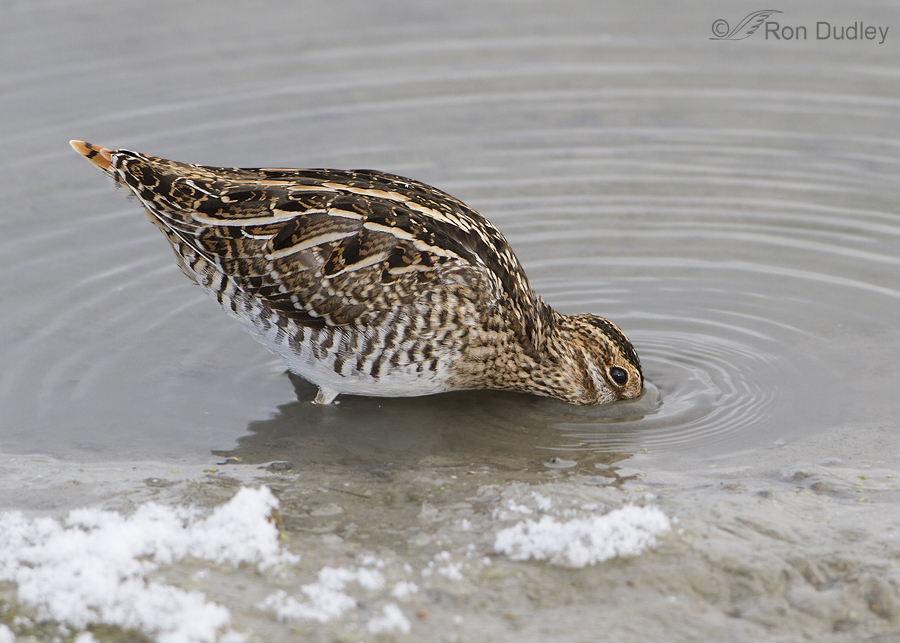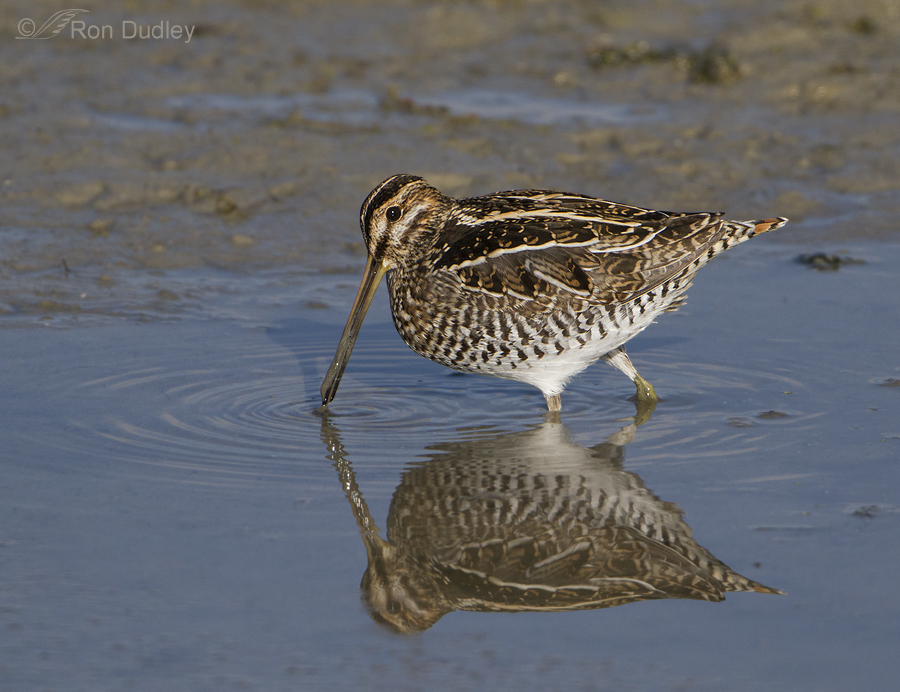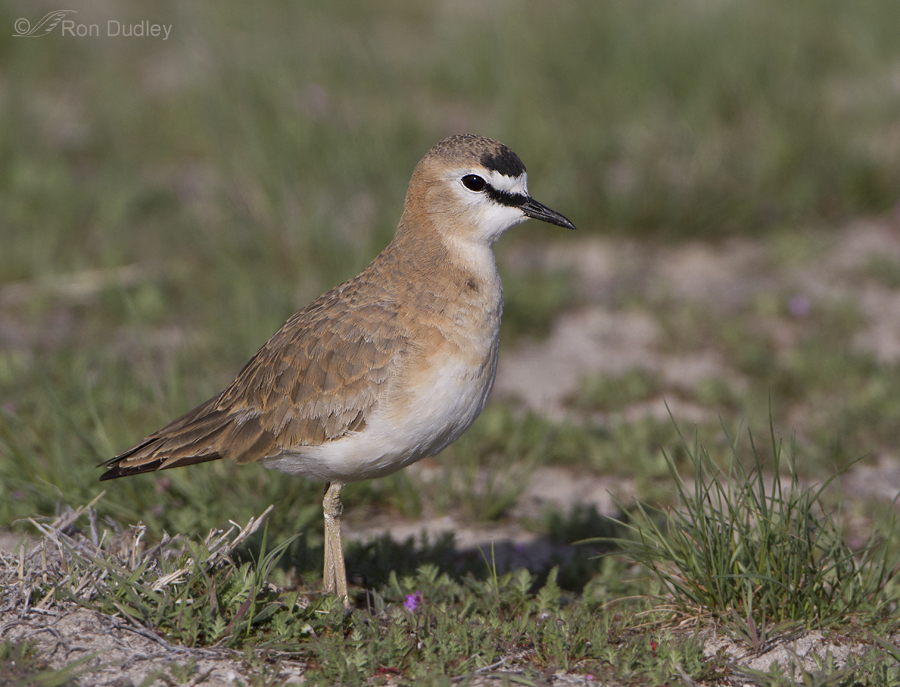Tag: feeding
Wilson’s Snipe
Mountain Plovers – “Prairie Ghosts”
Mountain Plovers Revisited
As some of you know, 10 days ago we found a pair of Mountain Plovers on Antelope Island. These plovers are rare in Utah, the few that are seen here are on their way to Montana, Wyoming and Colorado to breed so after a day or two these birds were gone. But they sure created a buzz in the birding community while they were here.
Canvasbacks – Feeding and Fighting
Because of its striking appearance the Canvasback is often referred to as the “aristocrat” of ducks. But as you’ll see, it’s difficult to look aristocratic with your face, head and neck slathered in mud.
Terns – After The Dive
Terns tend to be graceful and highly maneuverable flyers and those skills are very much on display when they’re fishing. 1/5000, f/6.3, ISO 500, 500 f/4, 1.4 tc, natural light I found this Forster’s Tern fishing at Bear River MBR last June and decided I’d attempt to photograph it coming out of the water after a dive – easier said than done. And to catch it with a fish would be a bonus. This species is known for feeding on “small” fish but this one is ridiculous – hardly worth the bother. If you look very carefully you can see the miniscule fish behind the upper part of the bill. I’ve cropped this shot unconventionally in order to include the “splash” behind the bird. These birds fish relentlessly. Their quarry is small, as is their success rate. In one Forster’s Tern study, 1538 dives produced 369 fish for a success rate of 24%. 1/5000, f/6.3, ISO 500, 500 f/4, 1.4 tc, natural light The fish is more easily seen in this next shot. When they come off the surface they usually shake excess water out of their feathers in mid-air. I caught this tern just before the shake, where it has twisted its wings in order to get good action for the upcoming shake. I missed the shake with this bird but… 1/1250, f/6.3, ISO 500, 500 f/4, 1.4 tc, natural light I did manage to capture it on another day with this Caspian Tern. I didn’t have enough shutter speed to get the quick movements particularly sharp but…
Western Grebe Fish Delivery
Temperatures are finally warming a bit here in northern Utah but the world is outside is still monotonously white. Yesterday morning I measured 22 1/2″ of snow on the north end of Antelope Island, indicating that our bleak and largely featureless landscape will remain the same for the foreseeable future. So this morning I needed a break and decided to post an image (taken this past June at Bear River MBR) that would remind me that spring is somewhere out there on the distant horizon. 1/3200, f/7.1, ISO 640, 500 f/4, 1.4 tc, natural light Western Grebes are devoted parents to their incessantly hungry and noisy chicks. The male and female take turns with their parental duties – one will back brood the youngsters while the other delivers fish and then they alternate responsibilities. Here the female (smaller than the male, with a shorter, thinner bill – thus sexual dimorphism) has caught a small fish and is delivering it to the male. Usually the parent receiving the fish will give it to the chick, as happened here. As I’m sure is obvious, I’m very much looking forward to watching and photographing springtime bird activities once again. It’s going to be a very long 2-3 months… Ron
A Pied-billed Grebe Attempts To Dismember A Frog
Pied-billed Grebes are opportunistic feeders, taking large crustaceans (especially crayfish), fish, insects and other invertebrates. They also consume a lot of frogs when they’re available. When the prey is too large to swallow whole (frogs and crayfish especially) they grasp the appendages with their beak and shake it vigorously until the limbs break off. I’ve also seen adults tear off bits of the body trunk of frogs to feed to their chicks. This bird is a juvenile, still learning the finer points of consuming prey. This stage of plumage development is referred to as the “stripe-head stage”, for obvious reasons. Adults lose those stripes. The frog it has captured is probably one of the first amphibians the bird has had to deal with without assistance from a parent and that inexperience seemed obvious as the young bird dealt with the frog. I’ve presented all the photos in this series in the order they were taken. As you can see, the young frog hasn’t yet fully metamorphosed into an adult and retains the tadpole tail. The grebe would repeatedly grasp a limb (it tried all 5 of them several times)… and then shake the frog violently in an apparent attempt to tear the appendage off like it has seen its parents do so many times before. Here it’s working on the left front leg. Other times the bird would grasp the body and shake. Hard! At times the grebe would appear to rest and “think” about its…
Song Sparrow In A Frosty Wonderland
It’s my natural tendency to avoid public displays of sentiment (another character flaw…) but recently I’ve been reflecting on just how much I enjoy blogging and interacting with my readers. Even though I’ve never actually met most of you, I can’t help but feel that we have become “friends” on some level. And this time of year especially, I think of my friends. Friends usually share at least some common interests and for us it seems to be a mix of birds, nature and/or photography. Many of you are more knowledgeable in those areas than I am and have graciously shared your expertise and experiences with me and others. For that I am grateful. So I wanted to wish each of you the very best this holiday season. I hope you’re with family and loved ones and that your experiences over the next few days will add to your cherished memories down the road. I wish you a safe and joyous holiday season! Ron About the image: The bird is a Song Sparrow, plucking seeds from a hoar frost covered stem on a very cold and magical early morning on the refuge wetlands. You can see frost falling near the tail from the feeding activity.
A Gluttonous Pied-billed Grebe
Pied-billed Grebes are opportunistic feeders so they’re not very fussy about what they eat, but they do seem particularly fond of crayfish, fish and frogs (including tadpoles). Before consuming crayfish and frogs (both are often too large to swallow whole) they rip them apart in an incredibly rapid shaking frenzy that tears off limbs and pieces before they’re swallowed (something I’ve documented here with a frog). They have very strong jaw muscles and before swallowing fish they repeatedly pinch them with their beak, which kills them by damaging their internal organs. Occasionally, when choosing prey, their eyes are bigger than their stomachs – as you’re about to see. (all images are presented in the order that they occurred) All images presented in this post had the following techs: f/6.3, ISO 500, 500 f/4, 1.4 tc, shutter speed ranged from 1/2000 to 1/1250 Last winter, I noticed this grebe just after it surfaced with a fish. A very large fish, at least relative to the size of the bird who must now swallow it. (I’ve never seen one tear a fish into smaller pieces before eating it). As a side-note, I liked the “extra eye” in the reflection at the bottom of the frame. I thought this image would give the viewer a good sense for the size of the fish – especially its width! But the poor bird didn’t have any time at all to get the meal down before other grebes rushed in to try to steal the fish. The competition at times like this is…
Clark’s Grebes – Parents Feeding Fish To Some Very Excited Chicks
This past June I spent lots of time with Western and Clark’s Grebes as they were raising their families. The two species are quite similar but the adult birds in this post can be recognized as Clark’s Grebes by their bright yellow-orange bills and the fact that their eyes are surrounded by white plumage, rather than black. 1/2000. f/7.1, ISO 500, 500 f/4, 1.4 tc, natural light This female of a mated pair was fishing for her family as the male back-brooded two chicks (the sexes take turns with each role). I happened to catch her just as she emerged from the water with a fish and shook the water off. I wish I had better eye contact and more room around the grebe, but this image is full frame. I include it here because it’s the logical beginning of this “fish story”. 1/2000. f/8, ISO 500, 500 f/4, 1.4 tc, natural light Seconds later she swam over to deliver the fish to her family. Sometimes the fish will be given to the brooding parent, who may eat it or give it to a chick. Other times, the fishing parent gives it directly to one of the youngsters. Either way, if the chicks are hungry they become very excited and aggressive in their attempts to be the one who gets the fish. Before the young birds saw breakfast coming their way, they were tucked down peacefully under each wing with only their heads and necks sticking out. All that changed in an instant. 1/2000….
An Amazingly Resilient One-legged Ibis
Last week I came across this one-legged White-faced Ibis at Farmingtom Bay. Normally, these birds feed by slowly wading through the water and locating their invertebrate prey by tactile probing of the muddy substrate. Their long, recurved and extremely sensitive bill is an ideal tool for this purpose. But this bird, of course, is unable to wade. So it would stand in one spot for a few seconds while feeding and then jump to the next spot with great effort. The problem it had with this method was maintaining balance as it was landing in the new spot, since it couldn’t put down the missing leg for support. So, as it landed it would use that long bill as a sort of substitute for the missing leg and foot, thus gaining an additional balancing and support point in the mud. Here it has just regained balance and is closing its wings and pulling its long bill off of the mud. Perhaps what the bird was doing can be better visualised from this one photo, where you can tell from the turbulence around the right leg that the ibis has just landed in this spot a split second before and that it is using its long bill to brace itself in order to regain balance. And here I caught the ibis just as it was “landing” on a new feeding spot – the water is actually fairly deep here. I hope this post isn’t seen as much…
Falconry – A Detriment To The Birds?
As some of you will remember, I’ve recently made two posts calling into question some of the ethics of the “sport” (some don’t like that term) of falconry. This was the bird that prompted my most recent post – an “escaped” female Peregrine Falcon that I photographed along the Antelope Island causeway a few weeks ago. You’ll notice that she still has her leather falconry anklets above her feet (only one can be seen in this photo). And last year, this escaped male American Kestrel was loose near Farmington Bay WMA and it still had not only its anklets but its jesses. The extreme danger to the bird of having those long, dangling jesses engangle and kill the kestrel is obvious. In both posts I questioned the ethics of falconry in general, but admitting my relative ignorance of the subject I asked (on the second post) for more information from my readers to “enlighten” me on the subject. For those who haven’t seen those posts and have the interest, here’s the links: Escaped Falconry Bird – Peregrine Falcon Escaped Falconry Bird – Peregrine Falcon, Again Mark Runnels, a master falconer from Oklahoma, responded to the second post with a series of very detailed, knowledgeable and thoughtful comments on falconry – responding to each of my concerns dispassionately and eloquently. However, that post was made on September 17 and Mark didn’t begin to comment until October 23, which means that his valuable information likely went under the radar for most of my readers (very few folks come back to a…
Juvenile Willets In Montana’s Centennial Valley
On my mid-July trip to the Centennial Valley I spent several days with an adult Willet and two juveniles. I reliably found them foraging for insects where a dirt road met Lower Red Rock Lake. Most of the shore birds and wading birds in this area are truly wild and difficult to approach but these three birds were the exception as they repeatedly let me get close as they fed and preened. 1/2500, f/7.1, ISO 400, 500 f/4 This was the most perfectly coiffed of the two juveniles, as the other youngster had a patch of unruly feathers on the back of its head and upper neck. 1/2500, f/7.1, ISO 500, 500 f/4 This particular site provided a bountiful Arthropod smorgasbord for the willets, both in the water and on the shoreline. The birds would feed on aquatic insects and crustaceans in the shallow water for a while and then get a little variety in their diet by coming up onto the shore and gobbling down hordes of terrestrial insects. Here, the more unkempt juvie (notice the fluff of feathers on the back of the head) feeds on a variety of dipterans that it flushes from the vegetation. I’ve cropped this image unconventionally to show more of the “bugs” in the air. I didn’t get a catch light in this shot but this image showed the insects best. 1/2000, f/7.1, ISO 400, 500 f/4. 1.4 tc At times some of the insects almost seemed to dare the Willets to pluck them out of…
Savannah Sparrow Parasitized By Cowbirds
Brown-headed Cowbirds are well-known for laying their eggs in the nests of other species – brood parasitism. A single cowbird female may lay up to 40 eggs in the nests of other species per season. More than 220 host species have been identified and at least 144 of those species have successfully raised the parasitic cowbird offspring. The physical size of the host species ranges from tiny 10 gram creepers to 150 gram meadowlarks. For a variety of reasons, the young of the parasitic cowbirds are more likely to survive than are those of the host species. The breeding success of the rare Kirtland’s Warbler has been severely reduced by cowbird brood parasitism. 1/1600 f/7.1, ISO 400, 500 f/4 On our recent trip to sw Montana we found this Savannah Sparrow bringing food (insects, mostly young grasshoppers) to one of its fledglings on a fence near our campground. 1/1600 f/6.3, ISO 400, 500 f/4 But the fledgling was a cowbird and not a Savannah Sparrow. Cowbirds are more than twice the size of Savannah Sparrows by weight and that difference is obvious here. 1/1600 f/7.1, ISO 400, 500 f/4 The cowbird youngster was boisterous and rambunctious when food was brought in. I actually had the impression that the adult sparrow was a little intimidated by the size and hyperactivity of the cowbird chick and the “parent” bird didn’t stick around for long when food was delivered. 1/1600 f/7.1, ISO 400, 500 f/4 After the chick swallowed this grasshopper the sparrow gave it another…




